Imagine this: you wake up, walk into your bathroom, and notice a spider-web crack in the shower door. Or you walk past your storefront and notice a faint chip in the glass that seems to be growing. In both cases, you face the choice: glass repair the whole pane (expensive, messy, time-consuming) or restore it smartly. That’s where innovative glass repair techniques come in. These are not simply basic solutions; they preserve aesthetics, safety, and cost while minimizing disruption.
The thing is that not every “glass repair” is equal. Some repairs are superficial, others require structural intervention, and some are simply not viable. What really separates average work from excellent work is knowing which method suits which damage and executing it well. In this post, I’ll walk you through cutting-edge methods, real examples, decision guides, and practical tips to maintain your glass long term.
Key takeaways
- You’ll learn smart repair vs replace criteria for windows, shower doors, mirrors, and storefront glass.
- You’ll see actual techniques (resilvering, resin fills, seal replacement) that extend life and reduce costs.
- You’ll get a decision matrix to pick the right solution by damage type.
- You’ll see case studies from real projects to show what works in practice.
- You’ll get a clear call to action to plan your next fix, not guess.
Let’s break it down.
Why modern approaches to glass repair matter
Glass might feel firm, yet tiny damages can become massive. A small chip can cause an unsound seal, and it can contaminate the insulated glass. Making repairs early will help prevent safety risks, along with energy loss and visual degradation. The modern glass repairs are all about repair, not just patching.
Glass restoration: preserving original fixtures
Instead of discarding a door or large pane, glass restoration aims to preserve the frame, hardware, and surrounding materials. It means less demolition, less mess, and lower replacement cost later.
Energy & safety gains with tempered glass solutions
Many shower doors, storefronts, and railings use tempered glass. When damage occurs, safety standards matter: misrepair can violate building codes. Modern repair methods make sure safety glazing still meets spec, or else replace tempered segments entirely, a method Davila uses in its shower, storefront, and railing offerings.
What this really means is: good techniques stop further damage, protect value, and preserve safety without defaulting to full replacement.
Common damage, and how today’s fixes respond
Different kinds of damage call for different styles of repair. Let’s look at common problems and current repairs.
Chips & small cracks: resin fills and spot repairs
For small surface chips or non-through cracks, clear resins or epoxies can fill and bond. The repaired area becomes structurally sound and visually acceptable. This is one of the go-to glass scratch repair techniques.
Fogged panes & seal failures: restore or replace sealed units
Double-pane glass often fails due to seal leaks, letting moisture in, and fogging the view. In many cases, the sealed unit is replaced entirely; you can’t reliably repair a broken seal from the inside. That’s not a cosmetic fix, but it’s a modern “restore or swap” approach.
Leaky shower doors & worn seals: vinyl and seal repairs
Shower panels often leak because gaskets or vinyl seals degrade. Replacing those seals, re-applying silicone, or recalibrating door alignment avoids replacing the whole glass. Davila lists vinyl and seal repairs among their glass repair & replacement services.
Mirror deterioration & resilvering
Mirrors lose their reflective backing over time (dark spots). Resilvering is the process of re-applying the backing. When done carefully, the mirror lives longer. Davila offers mirror repair & replacement in their service list.
Full glass or tempered replacement for serious breaks
If the glass is shattered, cracked through in load-bearing zones, or the damage is on a tempered panel, full replacement is safer. Davila handles full replacements for windows, storefronts, and glass enclosures as part of their repair/replacement services.
Techniques Davila Glass & Mirror uses
Here’s what Davila offers in practice. These are proven methods drawn from their service pages.
Custom glass cutting & precision replacement
When a full pane must be replaced, Davila fabricates custom glass panels to fit exact dimensions. This helps preserve frames and reduces gap issues.
Vinyl & seal repair for enclosures
Instead of discarding a glass shower panel entirely for leaks or low edges, sealing solutions (new seals, recalibration, gaskets) solve many problems. That’s a smart, lower-cost approach to glass repair.
Mirror repair & resilvering
Rather than tossing a mirror with black spots, they offer backing repair or mirror replacement. This is especially useful in bathrooms or gyms where mirrors are large and costly.
Tempered glass for safety zones (doors, storefronts, railings)
When damage is irreversible or related to safety, tempered glass replacement is the fallback. Davila handles those replacements for enclosures, storefronts, and railings to maintain compliance.
Fast assessment & quoting
They emphasize fast, reliable quotations and site assessments. This means less waiting and informed choices early.
Repair vs replacement: your decision toolkit
You don’t want to overpay or under-safe. Use these rules to decide.
| Criteria | Repair (smart) | Replacement (required) |
| Damage size/type | Small chips, hairline cracks, seal leaks | Full cracks, shattered glass, temper break |
| Location/load | Non-structural zone (mirror, pane) | Safety zones (doors, railings, storefronts) |
| Cost comparison | Repair cost << replace cost | Replacement cost close to or less than repair |
| Time/disruption | Minimal downtime | More setup, permitting, framework |
| Compliance | Meets safety and code | Ensures legal safety glazing |
When repair is better: if the damage is cosmetic, in a non-critical spot, and the repair cost is low.
When replacement is safer: if safety is at stake (tempered zones), damage is large, or the pane is structurally compromised.
In that latter case, replacement, you still use “glass repair” in your explanation: “Repairing minor damage is often less costly, but full replacement is sometimes mandatory for safety zones.”
Real-world case studies from their projects
Seeing methods in action helps more than theory.
Shower enclosure: leak to frameless upgrade
A homeowner complained of a persistent water drip at the bottom edge. Davila installed a vinyl gasket and re-aligned the door, and then resealed it. The result was no leaks, a clean finish, and no need for a complete replacement of the glass. This is a demonstration of the ways that residential glass repair methods prolong the life of glass.
Storefront crack → full replacement fast
A retail client had a small crack in the front display window. Davila evaluated, determined repair was unsafe, and replaced it with a new tempered pane within 48 hours, minimizing business downtime. They quote project scheduling on their storefront glass page.
Mirror wall restoration
A gym had mirrored walls with mirror backing flaking in patches. Davila resilvered the flawed sections and replaced certain mirror panels. The blending was seamless and cost far less than full mirror replacement. Their repair/replacement section lists mirror work as part of the services.
These examples show exactly how they match technique to damage, rather than blindly replacing.
Maintenance, protection, prevention
Fixing damage is one thing; preventing it is smarter.
Protective coatings & cleaning routine
Use gentle alkaline glass cleaners as well as soft tools (squeegees and microfiber towels). Avoid abrasive pads. Some coatings block stains or water. Cleaning tips from the industry (e.g., the advice in Southern Living referencing Glass Doctor’s instructions) is a good source of regular maintenance.
Seal inspection & resealing
Check gaskets, silicone seals, and vinyl joints periodically. If they crack or lose adhesion, replace them early. That acts as an ongoing residential glass repair to delay more serious damage.
Know when to call a pro.
If cracks spread, glass chips into the frame, or safety zones are involved, DIY fixes fail fast. Let professionals plan repair rather than patching repeatedly.
Choosing the right glass repair partner
You want someone you trust. Here’s a checklist.
- License, insurance, and warranty – always required
- Experience – decades of work matter. Davila Glass & Mirror shows a portfolio and testimonials.
- Gallery & case studies – real examples of repair & replacement
- Fast quoting and assessments – no hidden delays
- Material quality – low standards cause failures
- Clear communication – scope, cost, schedule
Ask questions: what methods do you use? How do you choose repair vs replacement? What warranty do you offer?
Take control of your glass: smart repairs, lasting results.
- Repair early – don’t let small chips grow.
- Pick the right method – resin, seal repair, or full replacement, depending on context.
- Choose competent pros – 20+ year firms with galleries show real ability. That’s the level you want Davila Glass & Mirror to hit.
- Maintain regularly – clean, reseal, inspect.
- Understand cost vs safety – sometimes replacement is the only safe path.
When you face broken panes, cracked shower doors, or damaged mirrors, you don’t need to guess. You can work with a team that knows innovative glass repair techniques, uses smart judgments, and executes efficiently.
Want clarity (literally) back in your space? Schedule an assessment with a trusted glass & mirror specialist. Ask for a quote on your damaged pane, shower door, or mirror. The right method can restore your view without breaking your budget.
FAQs
Q: Can cracked glass be repaired, or must it be replaced?
It depends. Small cracks or chips in non-load zones can often be repaired with resins or epoxy. But if the glass is framed in a safety area (door, storefront, railing), replacement is safer and code-compliant.
Q: How much does shower door glass repair cost?
Costs vary by damage. Minor fixes (chip repair, seal change) may run a few hundred dollars. Full replacement can cost significantly more, depending on size and glass type.
Q: Can mirror silvering be restored?
Yes. Resilvering can re-apply the reflective backing to an existing glass mirror. It’s an option Davila offers in their mirror repair/replacement services.
Q: How quickly can a storefront glass be replaced?
In many cases, small storefront fronts can be replaced in 1–2 business days. Larger fronts or custom glass may take 3–5 days.

